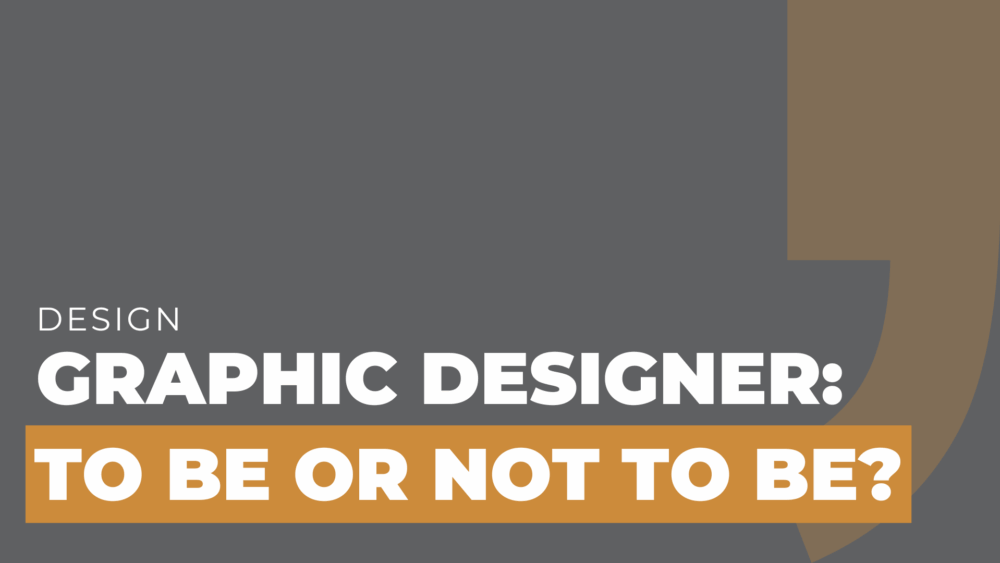The question of whether to pursue a career as a graphic designer is a big one.
It’s an appealing path for many, thanks to its blend of creativity and impact.
But, as with any career, there are challenges and realities that need to be considered if you’re just beginning your education in graphic design.
So, is the life of a graphic designer right for you?
The Short Answer: Deciding to become a graphic designer depends on your passion for creative problem-solving and your willingness to adapt in a fast-changing industry.
It’s a rewarding path for those who thrive on visual communication and storytelling, but it’s not without its hurdles.
At MOCK, the agency, we have a passion for graphic design that is well worth the struggles that sometimes come with it.
What Are the Key Skills and Qualities Needed for Graphic Designers?
Before you jump headfirst into graphic design, it’s important to know what you’re getting into.
Graphic designers need a mix of technical and creative skills.
From mastering tools like Adobe Creative Suite to understanding typography and color theory, the job is both art and science.
Equally important are soft skills like communication, time management, and the ability to take and incorporate feedback.
In short, being a great graphic designer means being a master of many trades.
Technical Skills: The Tools of the Trade
Graphic designers use a variety of tools to bring their ideas to life.
Adobe Creative Suite (which includes Photoshop, Illustrator, and InDesign) is the industry standard.
Beyond that, knowledge of web design languages like HTML and CSS can be extremely valuable, especially as more design work moves online.
Soft Skills: More Than Just Art
Being able to communicate your ideas and work well with others is just as crucial as your technical skills.
Whether you’re working in an agency in Atlanta or freelancing from a cozy home office, you’ll need to collaborate closely with clients, developers, and other creatives to bring projects to life.
How Does a Graphic Designer’s Role Differ in Freelance vs. Agency Settings?
Where you choose to work can shape your experience as a graphic designer in very different ways.
You can have a good career working in an agency or as a freelancer.
Agency life tends to be fast-paced, with the opportunity to work on a variety of projects for multiple clients.
Freelancing, on the other hand, offers more control over your work and schedule but comes with the challenge of finding and managing clients.
The Agency Environment
Working in an agency, whether it’s a big name in Atlanta or a boutique firm, often means handling multiple projects at once and collaborating with a team.
The variety of work can be exciting and even fun, but it also means deadlines can be tight, and the pressure to deliver is high.
The Freelance Lifestyle
As a freelance graphic designer, you’re your own boss.
This gives you the freedom to choose your projects and set your hours.
However, the downside is that you also have to be your own business manager, which includes finding clients, managing contracts, and dealing with taxes.
What Are the Most Common Misconceptions About the Graphic Design Profession?
Graphic design might seem like it’s all about creativity and coming up with cool ideas, but there’s a lot more to it.
One common misconception is that it’s just about making things look good.
In reality, it’s about solving problems. Good design is strategic and purpose-driven, not just pretty.
Myth 1: Graphic Designers Work Alone
Many people think of graphic designers as solitary artists, working away on their own. In truth, most graphic designers work closely with others, whether it’s other designers, marketing teams, or clients. Collaboration is key.
Myth 2: You Have to Be an Amazing Artist
Another myth is that you need to be a brilliant artist to succeed as a graphic designer. While having a strong sense of visual aesthetics is important, many successful designers aren’t traditional artists. What’s more important is your ability to communicate ideas visually and understand design principles.
How Can Aspiring Designers Stand Out?
Standing out in a competitive industry means building a portfolio that showcases your versatility and creativity.
If you’re just starting, attending graphic design schools can provide you with a solid foundation.
Schools offer not just technical training but also the chance to work on real-world projects that can be included in your portfolio.
Remember, your portfolio is your most powerful tool — it should highlight your best work and reflect your personal style.
Education and Experience
Graphic design schools can help you develop the necessary skills and knowledge. But beyond formal education, experience is key.
Internships, freelance gigs, and personal projects all contribute to building a portfolio that stands out.
Building a Strong Portfolio
Your portfolio should be a collection of your best work.
It should demonstrate your range of skills, from branding to web design, and showcase your ability to solve problems creatively.
Including a mix of personal and professional projects can show potential employers or clients that you’re not only talented but also passionate about design.
At the End of the Day
Deciding whether to become a graphic designer is a personal choice that depends on your passion, skills, and career goals.
It’s a field that offers both creative fulfillment and professional challenges.
Whether you choose to work in an agency, go freelance, or start your own design studio, graphic design can be a rewarding career for those who are up for the challenge.


Comments are closed.